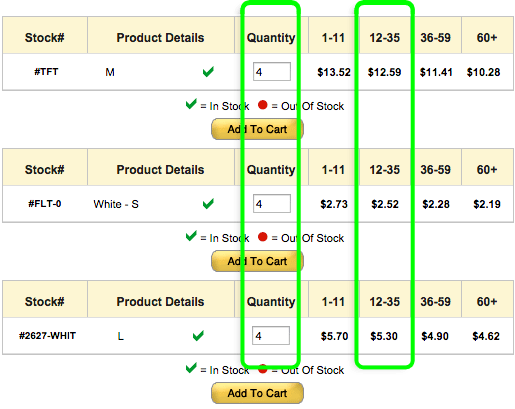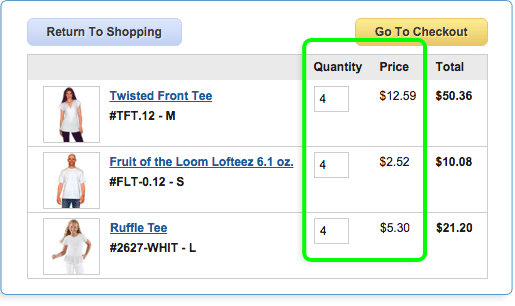Tie-Dye Basics

No, that is not a giant lobster in the mirror, it is your sunburnt self. We have all done it at one time or another, at the beach, on a hike or out in the garden - forgotten the sunscreen only to pay for it a couple hours later. Sunburns are no fun, they are uncomfortable at best and can lead to skin problems later on. But you can help protect yourself from sunburns without the goopy sunscreen, it is just a matter of the right fabrics, or treating fabric (with our new iDye Sun Blocker) to improve protection.to improve protection.


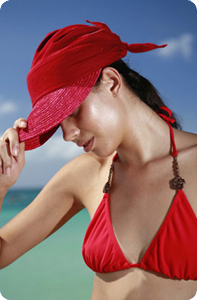 Sunburn can occur in less than 15 minutes of exposure to ultraviolet light. The inflicted harm is often not immediately obvious. Your skin may start turning pink in as little as 30 minutes but generally it takes 2-6 hours, too late to remember to put some sunscreen on and mitigate the damage.
Sunburn can occur in less than 15 minutes of exposure to ultraviolet light. The inflicted harm is often not immediately obvious. Your skin may start turning pink in as little as 30 minutes but generally it takes 2-6 hours, too late to remember to put some sunscreen on and mitigate the damage.
In order avoid a sunburn, the amount of UV radiation reaching the skin must be reduced. You can try to stay aware of the UV index in your area, but that is not really going to make the kids want to come inside. Or you can limit the amount of time you spend in the midday sun (between 10 a.m. and 4 p.m.), but who wants to be a Vampire? It is much easier to dress to protect with light weight, full covering protective clothing and a wide-brim hat.
There is also some controversy over the benefits and effects of using sunscreen. We know sunburns and prolonged UVA & UVB exposure can cause the skin cancers basal-cell carcinoma, the mildest form of cancer, or squamous cell carcinoma and that sunscreen reduces the chance of them developing. However, recent research has suggested that the chances of getting malignant melanoma, the type of skin cancer folks are most worried about, may actually be increased by using sunscreens because they increase the amount of free radicals in the skin. Now, we are not dermatologists (just dharmatologists) so we suggest you read the research yourself. To us a big hat just sounds a lot simpler, less goopy, and most importantly, more fashionable (unless you use that zinc-oxide stuff and have the ‘white nose at the pool" look going, which is hot!).


UPF is the rating for a fabric/textile given as the ratio of UV rays measured without the protection of the fabric vs the amount of UV rays detected with protection of the fabric. For example, a fabric rated UPF 30 means that if 30 units of UV fall on the fabric only 1 unit will pass through. A UPF 30 fabric that blocks or absorbs 29 out of 30 units of UV is therefore blocking 96.7% UV.
How to compare UPF Ratings:

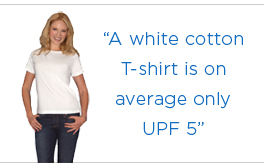
A white cotton T-shirt is on average only UPF 5, so folks with fair skin (a.k.a. morlocks) often turn a bit pink even through their shirts. The fabrics with the highest UPF ratings are tightly woven, dark materials. Darker clothing absorbs much more of the UV radiation before it makes it to your skin. Unfortunately, it makes it rather warm to wear, which is not what you want on a day at the beach. Synthetic materials like Acrylic and Polyester also have high UPF ratings but, with the exception of expensive special high performance fabrics, they are not very breathable. Natural fibers like cotton, rayon, bamboo, linen etc are much more comfortable in general. What to do?


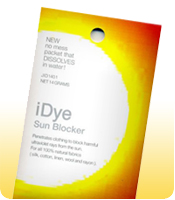 There are a number of things you can do to improve the UV Protectiveness of your clothing. One fun option is to over dye some of your clothes a slightly darker shade. Even slightly darker blues and greens will take the UPF of a shirt from 5 to 25, a substantial difference that will also give you a chance to revamp some clothes that still have some life in them. Dyeing fabrics makes them more UV protective because the covalent bonds formed with the fiber absorb UV frequencies, though over time this weakens the bonds and can cause normal fading.
There are a number of things you can do to improve the UV Protectiveness of your clothing. One fun option is to over dye some of your clothes a slightly darker shade. Even slightly darker blues and greens will take the UPF of a shirt from 5 to 25, a substantial difference that will also give you a chance to revamp some clothes that still have some life in them. Dyeing fabrics makes them more UV protective because the covalent bonds formed with the fiber absorb UV frequencies, though over time this weakens the bonds and can cause normal fading.
Another option is to treat your clothing with a UV Absorbing treatment like iDye© Sunblocker. Sunblocker treatments are very easy to use and much cheaper then going out and buying pre-treated clothing. These treatments are applied simply by running your clothes through a normal wash cycle with the product, and they don"t affect the look of the garments at all. The UV absorbers increase the UPF score of a fabric by about 25 points, so a white T-shirt with a starting UPF rating of 5 will jump to a UPF rating of 30. You would increase a dyed shirt up to about 50! Over time the treatment will wash out, after about 20 washings, but that will give you several months before you have to retreat things.


Do not fear it! Sun is good for you, Vitamin D, and all that. Taking common sense precautions will make it possible to get outside and enjoy it while it lasts, without having to worry about getting burnt. Now get outside and enjoy your summer! Fall will be here before you know it...


- Sun Protection
- Sunburns
- “Getting Burned? Put on a Shirt" by Stephen Leahy










